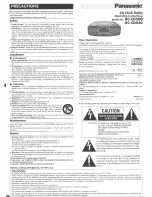
Exalt Installation and Management Guide
EX-i Series FDD Digital Microwave Radios
202675-005
97
2011-08-30
•
New construction nearby either end of the link, or along the path
•
Tree growth, flooded fields, or changes in rivers/lakes along the path
Verify that configurations are set as follows:
•
Frequency pair matches (oppositely) at each end of the link
•
Mode (Modulation) matches at each end of the link
•
Bandwidth matches at each end of the link
•
Ethernet interfaces are enabled, as desired
•
Ethernet interfaces are selected for Traffic, Management, or Traffic plus Management, as desired
•
T1/E1 enabling matches at each end of the link
•
Link security key matches at each end of the link
Also, use the
ExaltCalc
tool in the design phase to determine the optimum setting for the Bandwidth
and TDD Frame Length parameters for the given link distance, and provides guidance to the expected
RF link performance, as well as throughput, latency, and number of supported T1/E1 circuits.
Typical Indications of Issues
In many cases, microwave radio users do not notice changes or degradation to the radio system until
the radio system fails completely or becomes highly errored or significantly intermittent. However,
regular management of the radio system can help indicate changes in performance that have not yet
impacted user performance, but may impact performance at a later date if left unchecked or
unaddressed. The administrator can use this as an opportunity to be proactive and monitor the radio
link performance regularly, watching for unexplained or unexpected changes in performance and
trends in performance changes.
Most importantly, monitoring radio system RSL over time indicates the performance of the radio
system. Address any long-term drop in RSL and erratic or unsteady RSL. Some RSL changes are
expected and weather patterns and the related multipath can cause dramatic RSL changes resulting in
system outage. However, that outage should not occur at a significantly greater rate than the designed
long-term performance. Consult the path design engineer for more information about link reliability
expectations and anticipated RSL deviation.
In addition, regular inspection of the transmission system (RF cables and antennas) and paying close
attention to changes along the path, such as construction or tree height, or new microwave radio
installations nearby, can be extremely helpful and proactive.
When link performance is very poor, alarms on the radio front panel and within the radio’s
management system indicates particular failures. Consult this manual for more information on the
specific alarms and diagnostics, or contact Exalt Customer Care for assistance.
Exalt Customer Care is primarily motivated to determine if the radio hardware is faulty and require
return for repair, and to help execute an effective and efficient repair and return process for radio
terminals believed to be faulty. However, Exalt Customer Care provides advice regarding the total
radio system and RF path engineering and environment, and advises on troubleshooting.
End users should first contact the installer and/or designer of the system. In many cases, an in-depth
understanding of RF design is required, and on-site analysis and special test equipment, may be
necessary. Compared to phone support from Exalt Customer Care, troubleshooting is much more
expeditious if the professional installer and/or link designer examines the system and reviews the
management information in the GUI. In turn, if the professional installer and/or link designer contacts
Summary of Contents for EX i GigE Series
Page 133: ...202675 005 2011 08 30...















































